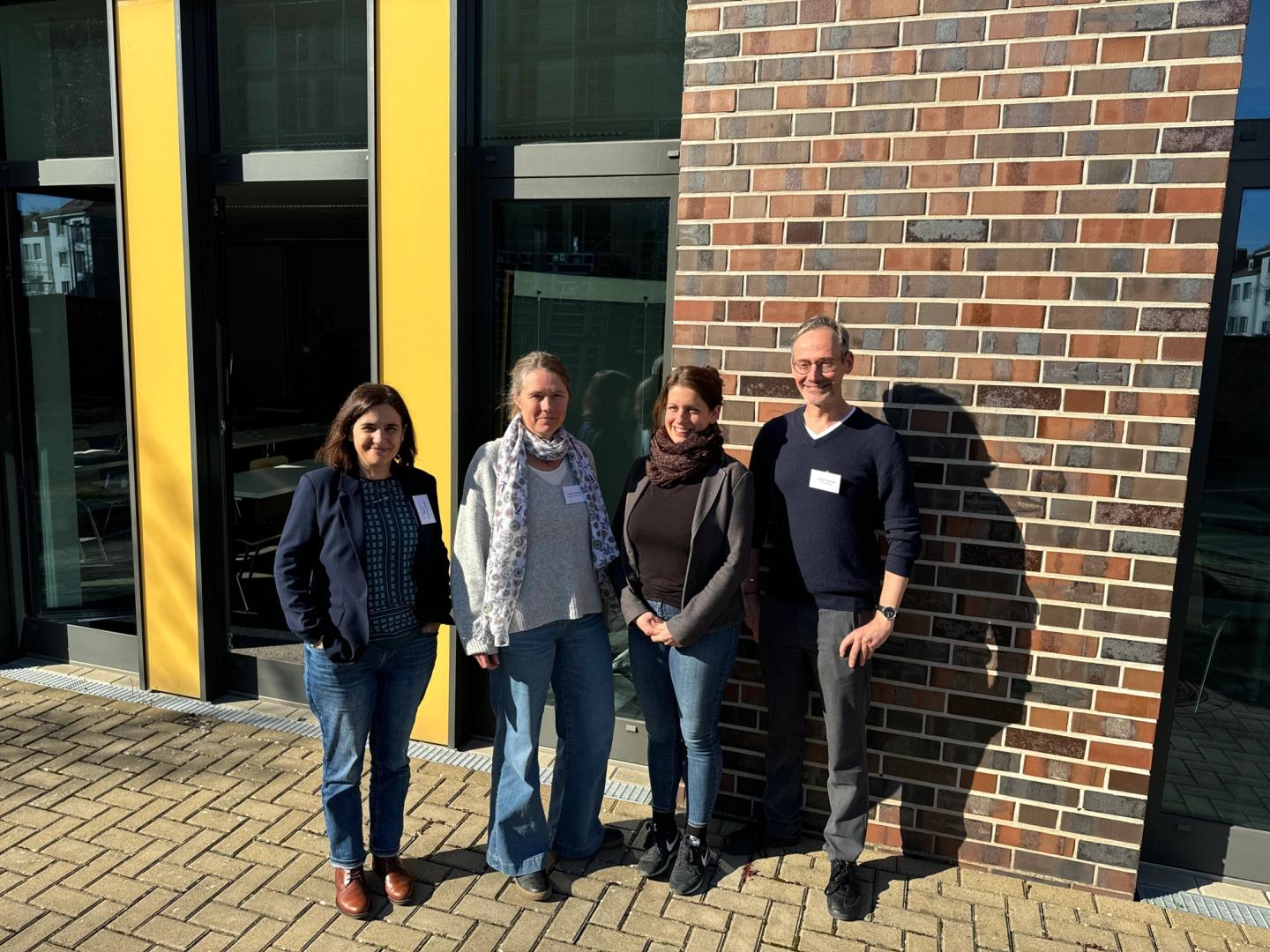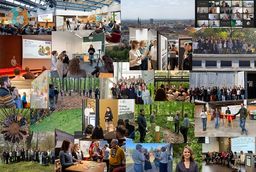
How do fungi, bacteria and other microorganisms interact with each other in the plant world? What possibilities do these interactions offer for important future issues such as plant protection and climate adaptation? The second workshop ‘Microbial Interactions in the Phytosphere’ took place in Braunschweig on 27 and 28 March 2025 to address these questions. Around 60 scientists took part in the conference at the Braunschweig Integrated Centre for Systems Biology (BRICS) and explored the potential of microbial interactions together. Prof. Dr. André Fleißner, head of the fungal genetics working group at the Institute of Genetics at the Technische Universität Braunschweig and part of the workshop's organising team, talked to us about the importance of microorganisms for plant health and the importance of networks in this field of research.
Microorganisms are essential for plant health
‘Plants are always associated with microorganisms. For example, a variety of bacteria and fungi live on them. We believe that the interaction between plants and microorganisms could be of similar importance to the microbiome in the human gut. The bacteria in the gut are an important factor for human health. It is the same for plants. Depending on which microorganisms live on it, the plant can be either healthier or less healthy,’ explains Prof. Dr. André Fleißner.
Not only the quantitative ratio of bacteria, fungi and other microorganisms plays a role here, but also their interaction with each other. An example of how important microbial interactions can be is shown by an experiment on the infestation of bean plants by grey mould. When the surface of a bean leaf is infected with grey mould, the fungus normally spreads and destroys the leaf tissue. Under laboratory conditions, however, the spread of the pathogen could be prevented by adding a second fungus. ‘At first we assumed that the second fungus would kill the grey mould. But that was not the case. Rather, a kind of reprogramming of the grey mould took place, so that it no longer infected the plant,’ says Fleißner. ’These microbial interactions are still far too under-researched and offer enormous potential, for example in sustainable plant protection.’
Climate change exacerbates the issue
The importance of microbial interactions is becoming more and more significant due to the consequences of climate change. ‘Drought stress, high temperatures and extreme weather events weaken the defences of plants, making them more susceptible to pathogens,’ reports Prof. Fleißner, citing as an example a visit to a pine plantation in South Africa where numerous trees were infected by a fungus and died. The researchers were able to identify damage to the bark of the trees caused by a hailstorm as the reason for this, which weakened the immune system of the pines and thus made them susceptible to pathogens.
But even fungi that are actually harmless, such as those found in pines, can become pathogenic and thus dangerous for the tree as a result of climate change. ‘In a healthy pine tree, for example, the immune system normally keeps the fungus Diplodia sapinea in check, in a state of balanced symbiosis. But if the immune system is weakened by drought and heat, the balance tips and the fungus ultimately kills the pine tree,’ says Fleißner.
Another factor that is giving research a further boost is the European Green Deal on sustainable agriculture. The deal aims to reduce the use of pesticides. Thus, alternative and environmentally friendly crop protection options must be found. The use of microorganisms could be an alternative here in the future.
Networking increases potential
In Braunschweig alone, several research groups are working on microbial interactions, including the Institute of Genetics and the Institute of Microbiology at the Technische Universität Braunschweig, the Julius Kühn Institute, the Leibniz Institute DSMZ-German Collection of Microorganisms and Cell Cultures, the Thünen Institute and the Helmholtz Centre for Infection Research. The workshop ‘Microbial Interactions in the Phytosphere’ is now intended to strengthen networking in Braunschweig and beyond, and thus ultimately advance research into microbial interactions, according to Fleißner: ‘Each scientist in the workshop looks at the research topic from a different perspective. But ultimately, we are all researching microbial interactions. If we network more closely and learn from each other, it can help us to understand the potential of microbial interactions and make them more usable. That is why we organised this workshop in cooperation with the Julius Kühn Institute and the Lower Saxony Centre for Climate Research. The Braunschweig location offers enormous potential for research into this important issue. We will strategically develop this potential in the future.

Contact persons
- Dr. Yvonne BeckerInstitute for Epidemiology and Pathogen Diagnostics, Julius Kühn Institute
- Prof. Dr. André FleißnerInstitute for Genetics, Technische Universität Braunschweig
- Dr. Maria Pimenta LangeInstitute for Plant Protection in Horticulture and Urban Green Spaces, Julius Kühn Institute
 Katharina Zickwolf, M.A. / M.A.Managing Director
Katharina Zickwolf, M.A. / M.A.Managing Director
More Posts
All
Happy Holidays!
We wish everyone relaxing days, time to take a deep breath and a good start to the new year. We will be available again from 5 January.
1 min. Reading time
2025 Year in Review – The ZKfN Year in Pictures
2025 was marked by the expansion of the Climate Future Labs, new collaborations and a more closely networked climate community in Lower Saxony.
5 min. Reading time
How collaboration across disciplinary boundaries works
The workshop at the ZKfN symposium showed the prerequisites for interdisciplinary and transdisciplinary collaboration and the added value it creates.
3 min. Reading time